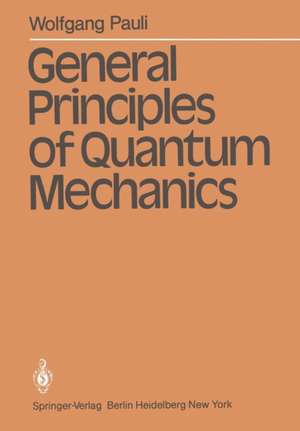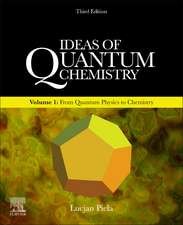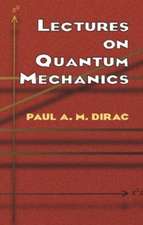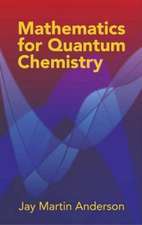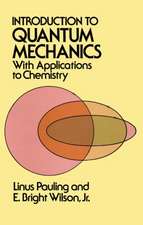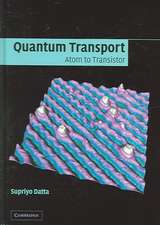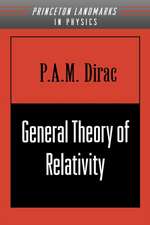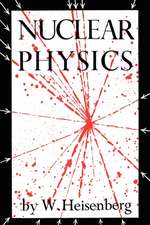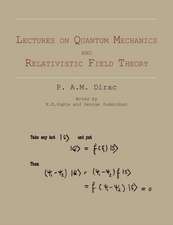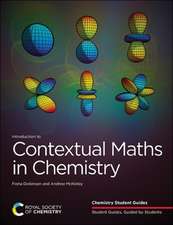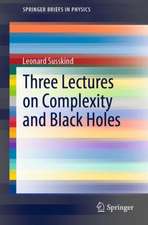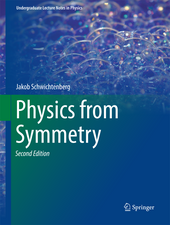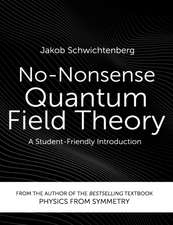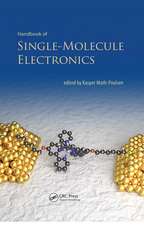General Principles of Quantum Mechanics
Autor Wolfgang Pauli Traducere de P. Achuthan, K. Venkatesanen Limba Engleză Paperback – oct 1980
Preț: 888.31 lei
Preț vechi: 1083.31 lei
-18% Nou
Puncte Express: 1332
Preț estimativ în valută:
170.03€ • 184.75$ • 142.92£
170.03€ • 184.75$ • 142.92£
Carte tipărită la comandă
Livrare economică 21 aprilie-05 mai
Preluare comenzi: 021 569.72.76
Specificații
ISBN-13: 9783540098423
ISBN-10: 3540098429
Pagini: 228
Ilustrații: XII, 212 p.
Dimensiuni: 170 x 242 x 12 mm
Greutate: 0.37 kg
Editura: Springer Berlin, Heidelberg
Colecția Springer
Locul publicării:Berlin, Heidelberg, Germany
ISBN-10: 3540098429
Pagini: 228
Ilustrații: XII, 212 p.
Dimensiuni: 170 x 242 x 12 mm
Greutate: 0.37 kg
Editura: Springer Berlin, Heidelberg
Colecția Springer
Locul publicării:Berlin, Heidelberg, Germany
Public țintă
Professional/practitionerCuprins
I The Uncertainty Principle and Complementarity.- 1. The Uncertainty Principle and Complementarity.- 2. The Measurement of Position and Momentum.- II Schrödinger Equation and Operator Calculus.- 3. The Wave Function of Free Particles.- 4. The Wave Function of a Particle Acted on by Forces.- 5. Many-Particle Interactions — Operator Calculus.- III Stationary States and the Eigenvalue Problem.- 6. Stationary States as Eigenvalue Problem.- Chpater IV Matrix Mechanics.- 7. General Transformations of Operators and Matrices.- 8. The General Form of the Laws of Motion.- V Theory of Measurements.- 9. Determination of the Stationary States of a System through Measurement: General Discussion of the Concept of Measurement.- VI Approximation Methods.- 10. The General Formalism of Perturbation Theory.- 11. Adiabatic and Sudden Perturbations.- 12. The W K B Approximation.- VII Identical Particles, Spin and Exclusion Principle.- 13. Hamiltonian Functions with Transformation Groups. Angular Momentum and Spin.- 14. The Behaviour of Eigenfunctions of Many Identical Particles Under Permutation. The Exclusion Principle.- VIII Semiclassical Theory of Radiation.- 15. Treatment of the Radiation Processes Based on the Correspondence Principle.- 16. Application of the Semiclassical Theory to the Coherence Properties of Radiation.- IX The Relativistic One-Particle Problem.- 17. Introduction.- 18. Dirac’s Wave Equation for the Electron. Free Particle Case.- 19. Relativistic Invariance.- 20. The Behaviour of Wave-Packets in the Free Particle Case.- 21. The Wave Equation when Forces are Present.- 22. Approximations of the Dirac Theory: The Non-relativistic Quantum Mechanics of Spin as First Approximation.- 23. Approximations of the Dirac Theory: Limiting Transition to the Classical, Relativistic Particle Mechanics.- 24. Transitions to States of Negative Energy. Limitations of the Dirac Theory.- X Quantum Electrodynamics.- 25. Quantisation of the Free Radiation Field.- 26. Interaction Between Radiation and Matter.- 27. Self-Energy of the Electron. Limits of the Present Theory.
